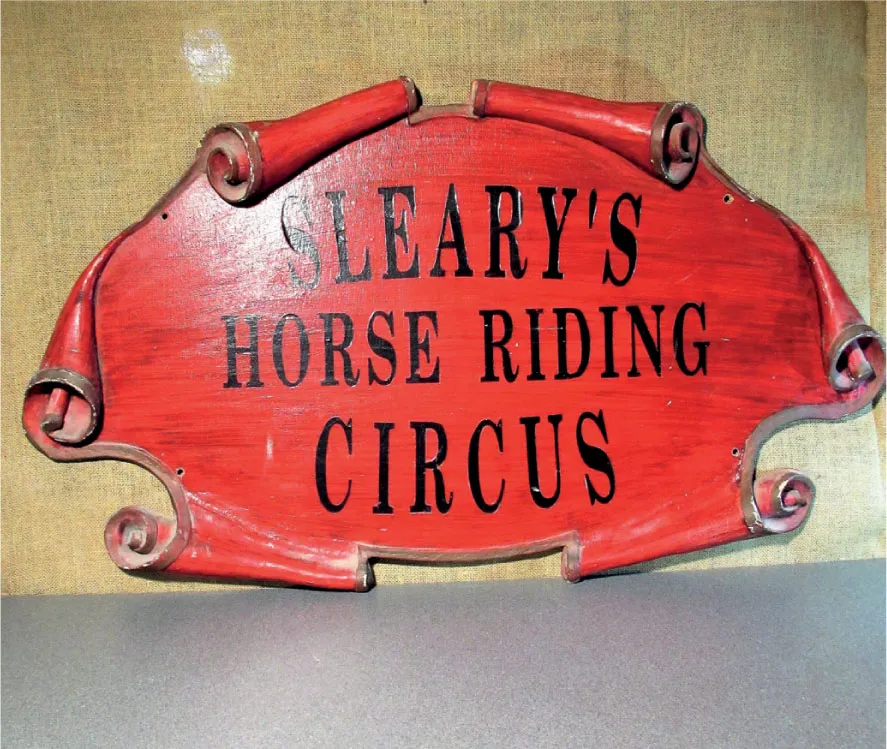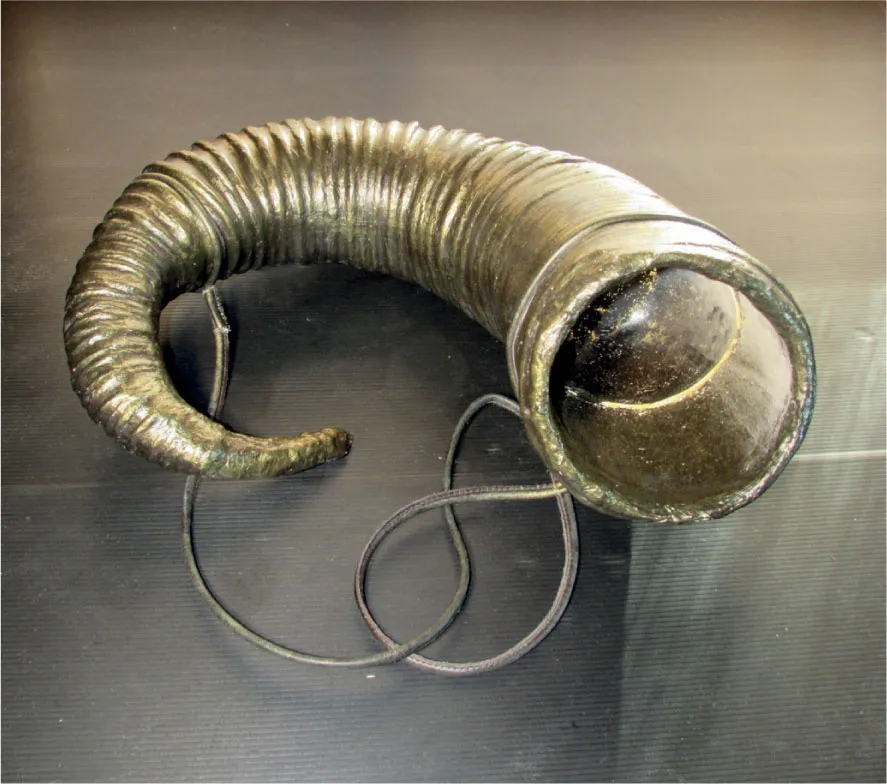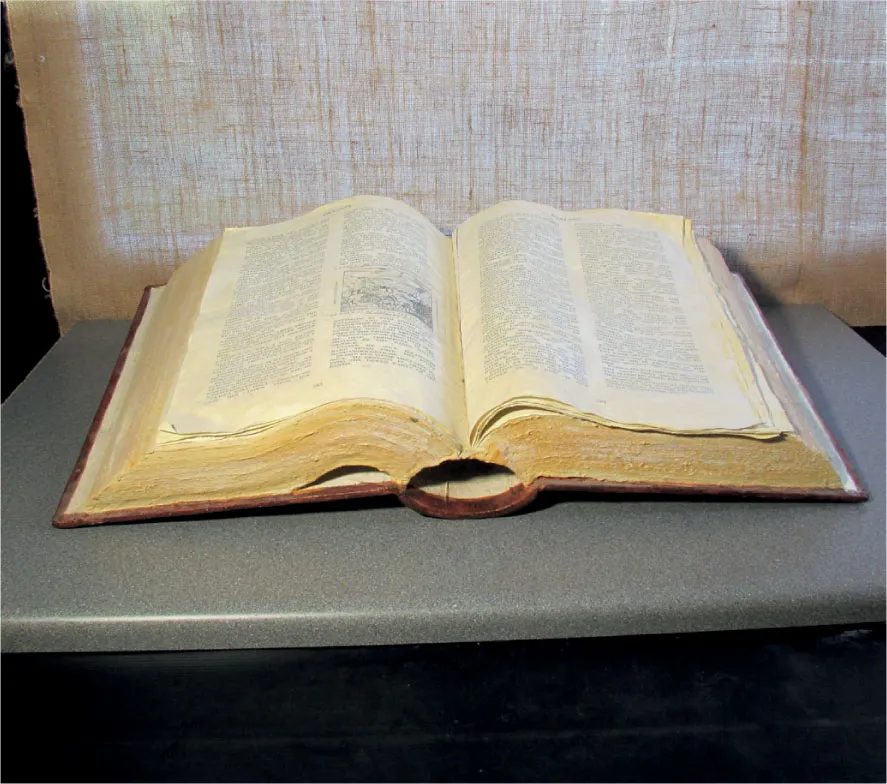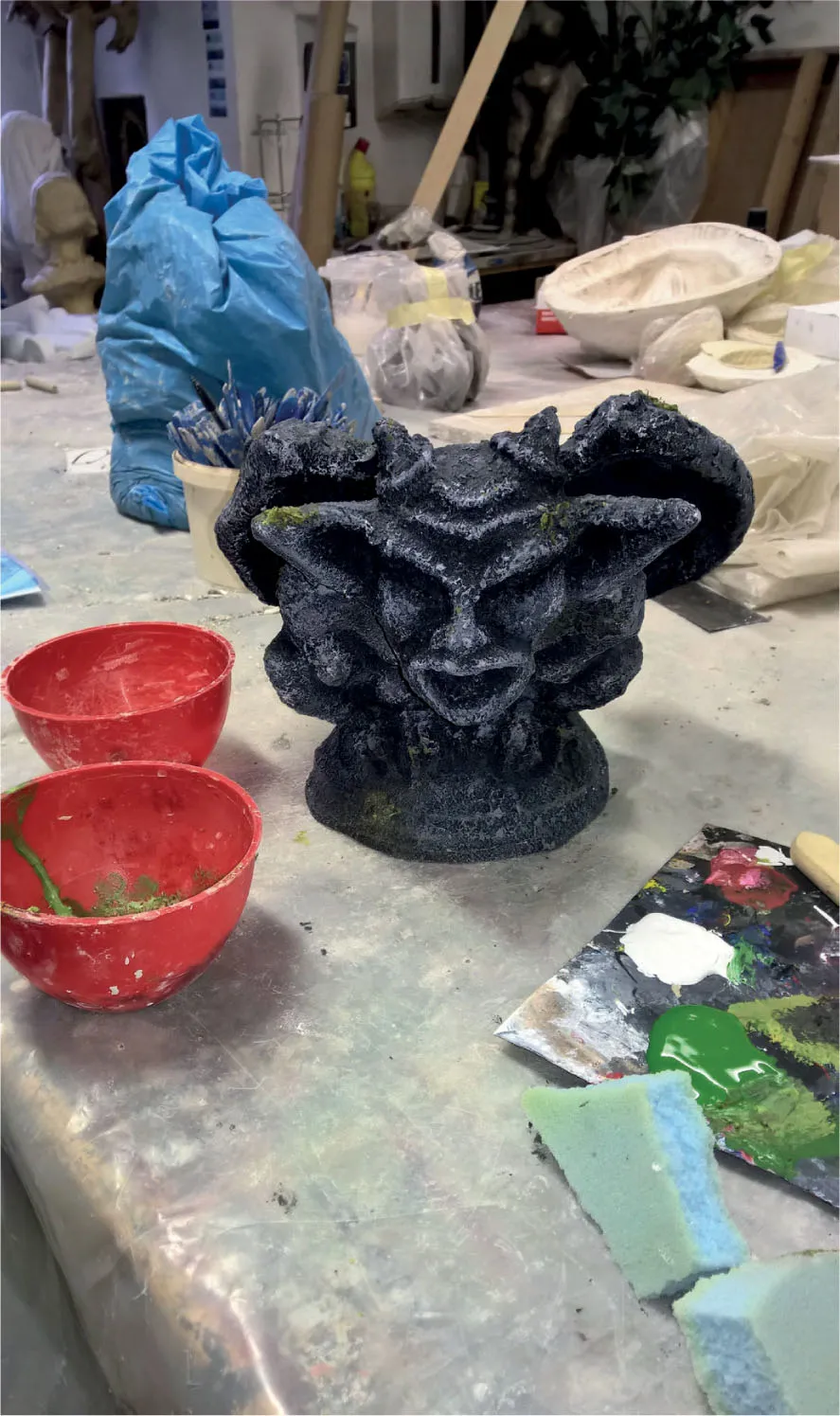![]()
Two approaches to bird forms. The pigeon is made of a wire frame, coir fibres, calico and latex, with fur fabric Copydexed on, trimmed and painted; from start to finish, this took an hour to make. The chicken was one of seven to be made: a supermarket chicken was to used to create multiple plaster moulds, which were used to produce latex castings, clay head sculpt and plaster mould, steel rod core, fur fabric, trimmed and painted.
1
AN OVERVIEW OF
PROP MAKING
WHAT IS A PROP AND WHAT IS PROP MAKING?
From a theatrical point of view, a prop is an item that is required for a production, normally to be interacted with by an actor or as a piece of set dressing that helps create the setting. This is of course a gross simplification, as within this description you can have costume props, actors’ personal props, LX (lighting) props, SD (sound) props, set dressing props, construction props, SM (stage management) props, props department (finding, sourcing and making) and props construction department (making and modification). Thus you can see that the requirement for a prop can cross over departmental boundaries, with some props needing to be sourced (borrowed, bought or hired) and some requiring to be made. It shouldn’t take too much logic to identify a potential ‘make’ from a ‘find’. Finding a giant’s cauldron for a Norse god can be challenging, and a suitable Tudor four-poster bed that isn’t too heavy/expensive to use, hire or buy, will generally have to be made. If a theatre is lucky enough to have a props construction department, then the work will generally go to them; if not, then it may well be freelanced out. Timber props can be created by the set construction department (often referred to as construction or ‘chippies’), but this will very much depend on their workload and individual skill sets.
This sign was required for a touring production of Charles Dickens’ Hard Times. Lightweight and extremely durable, the base material was 4mm plywood, the scrolled details were clay sculpts, plaster moulds and slush mould latex castings, glued to the plywood with Copydex. Once primed and painted, photocopied lettering was cut out and glued in place, then glazed.
Example of Prop Types
Personal props Watches, pocket watches, watch chains, wallets, spectacles, gloves, bracelets and brooches, rings and so on. These are normally provided by the costume department, but may be sourced by stage management and may also in some circumstances be makes.
Cornucopia (horn of plenty) made for A Christmas Carol. The wire-frame construction was stuffed with newspaper then covered with Gypsona plaster bandage and a PVA/water mix. Quarter-inch (6mm) paper rope was used for detail with more plaster bandage and PVA/water mix moulded over this. Layers of gesso were applied and sanded, and base coats and top coats of paint produced the gold finish.
The King James bible was needed for a church set in The Crucible. The book boards were 6mm (¼in) plywood covered with calico. The spine was sectioned thick cardboard tube, the page shape and flow and inner spine were shaped card with thin polystyrene sheet dressed over. The page edges were enhance with Celluclay.
LX/SD props/practicals These are usually props that require some handling by the actor and must light up or make a noise. They may well be adapted by the department concerned or be made in collaboration with the props construction department or solely by the latter. This could include statues that have to illuminate from within, ‘babies’ that have to cry or speak and so on.
Set dressing This includes anything that is required to provide the look and detail of a set or scene, such as additional pieces of furniture, paintings, pictures, ornaments, dust and cobwebs, bottles, piles of books and paper. There should be nothing that is superfluous, just what is needed to create the correct feel and atmosphere. Set dressing is normally addressed by stage management under the watchful eye of the set designer.
SM (stage management) props/prop makes These are props that are sourced or made by the stage management department, normally the ASM’s (assistant stage manager’s). This role includes finding furniture, trunks and cases, glassware, china, set dressing, bicycles – basically anything a production requires that can be sourced. SM makes tend to be more in the region of ‘running props’ or consumables, such as paper props, letters and documents that get destroyed during the production; foodstuffs that get eaten; and improvised items, like a roughly made child’s wooden sword or hobby horse. Generally, it comes down to the resources and skills available to the individuals in the department, who must consider any health and safety requirements. Where there is an ASM/prop maker and no resident prop maker, some of the more complicated props may be taken on by them.
Costume props These can take a variety of forms and can be part of the design of the costume (headdresses, masks, bizarre hats and so on), or can even be the costume itself such as a goose or a cow costume for panto. Some of these items may be made by the costume department, but it is also extremely likely that they will be made by the props production department, or in collaboration between the two or freelanced out to a speciality prop/costume maker, again dependent on time, resources and skill sets.
Gargoyle made by a member of stage management. It was a clay sculpt, covered in cling film and twelve layers of papier mâché. The dried papier mâché was cut open and the clay and cling film removed before the papier mâché parts were glued back together and more papier mâché was added to cover the seam. Monkey dung was used for a weathered stone effect and further dressing for lichen and moss and paint detail added the final touch.
Crowns made from different materials. From the rear: three crowns made from 10mm Plastazote, originally for Alice Through the Looking Glass; card and paper pulp construction with added details of wire and jewels; Cleopatra’s crown, made of laminated leather pieces, gold braid and amber beads for cobra’s eyes; two brass, copper and leather ‘breakable crowns’ for King Lear, using two fixing methods – joints and magnets.
We have seen that who ends up making a specific prop will be decided by the time, resources and skill sets available. In most cases this is more than likely to be the prop maker. This is not because the prop maker is necessarily the most gifted creatively, but simply because they are used to working with a wide range of materials and processes that are generally not used by the other departments and for which they are not equipped. If you aspire to be a master prop maker, then you need to become a jack of all trades. In absorbing different skill sets from different professions, you acquire the creative flexibility to construct and design amazing things, from the small to the large, because you can use a fusion of techniques and materials that complement each other. Yes, it takes time to acquire these skills and no, you won’t be able to learn them all at once, but remember that you have a lifetime to learn and hone them, so take your time and enjoy the experience. You can never learn everything; there is always something new, something else to try, even if it is just reassessing what you already know.
NO HARD AND FAST RULES
There are no hard and fast rules in how you approach making any prop, but there are certain considerations that may affect the way you look at what you need to do. Most of these will become apparent as you gain more experience with the techniques and materials, some of which will be mutually exclusive (although even here there are often ways around the problem). Designers often say that they want something to be made from a specific material or constructed in a certain way, which can be time-consuming and lead to unnecessary expense. What they usually mean is that they ‘want it to look like this and do that’. At the same time the director might stipulate that ‘it has to be as light as possible so that it can be picked up by one person, but it has to be climbed on by the cast, and it gets pushed over…’ and so forth. This is where the ‘1,001 ways’ of prop-making comes into play.
If you are asked to make an item, such as a barrel, an experienced prop maker should be able to come up with several suggestions off the cuff, including just getting hold of a real barrel. Obviously, there are other considerations here. Is it a modern or traditional barrel? How big is it? Does it remain where it is, or does it have to be moved; how quickly must it be moved and by whom? What sort of action is the barrel involved in? Are there any specific requirements, such as concealed access points or storage points? With a traditional barrel, weight is going to be the main consideration, as even the smaller ones, such as pins and firkins, could weigh as much as 20–30kg (44–66lb) without anything in them: not a problem if they are going to be rolled, but more of a issue if you have several them to strike in a blackout.






